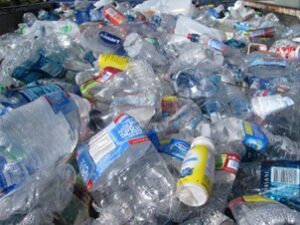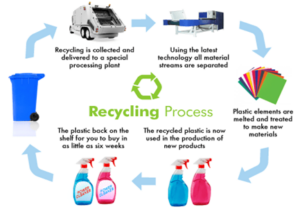Plastic Waste
WASTE MANAGEMENT

Introduction
The use of plastic has increased considerably in the past years, also increasing the amount of plastic waste that ends up in landfills or in the environment. Plastic waste has a negative impact on the environment and human health as it causes ground and water pollution if it remains unmanaged, can cause air pollution and respiratory problems. It is therefore necessary to find solutions to manage plastic waste better or lessen its use.
Description
To better manage plastic waste, cities should adopt a circular economy approach by investing in sustainable disposal infrastructure and advancing their waste collection systems, encourage recycling and the use of recycled plastic in manufacturing. Meanwhile, as plastic waste management often starts in the households, there are many ways to reduce plastics, such as reducing cellophane wrapped products, switch soap bottles for bars and plastic sponges for natural ones, and most importantly, reuse and repurpose plastic containers. Packaging that is reusable can be used multiple times once it is washed and returned to its original form. Reuse of plastic identifies 4 models: Refill at home (refilling plastic containers at home), Refill on the go (refilling out of home, at an in-store), Return from home (picking up packaging from home by pick up services), Return on the go (picking it up at stores). Special attention should also be paid on the use of biodegradable plastics, a kind of plastic that comes from natural and not artificial materials. Biodegradable plastics have the same end results in products as simple plastic but for its breakdown only needs a few months, while simple plastic can live for centuries. They can be absorbed in the soil or turn into compost, which means that plastic waste is decreased significantly.
The European Strategy for Plastics in the circular economy targets specific actions to eliminate the use of plastic. The recyclability of plastic packaging is a priority area. The goal is that by 2030 all plastic packaging in the EU will be either reusable or recycled. The next step is boosting the demand for recycled plastics and improving the collection and sorting process.

Main Features
- Design of recyclable packaging
- Uplift of demand for recycled plastics
- Improvement of collection and separation of waste
- Reuse of plastic containers

Image source: Different Methods to Recycle Plastic
Advantages and challenges
+ Environmental damage can be decreased by the reduction of plastic litter in landfills or plastic leaked to the environment if recycling plastic, reuse and refill methods are adopted by the citizens.
+ It is cost effective to follow reuse models instead of using single use plastic packages. Households spend less when they reuse their previous containers.
+ By switching to bioplastics, greenhouse gas emissions from plastic manufacturing can be reduced.
+ Conservation of natural resources and energy, as manufacturing of raw plastic requires more energy compared to producing from recycled plastic.
– Recycling is tightly tied with individual behaviour and there is not enough incentives for the consumers.
– It is difficult to collect and sort plastic waste if it has not been separated from the rest of the waste correctly and effectively. That is the reason why municipalities need to update their waste collection methods.
References
- Plastics and the circular economy (ellenmacarthurfoundation.org)
- Plastic Waste and the Circular Economy – BRINK – Conversations and Insights on Global Business (brinknews.com)
- Sustainability in the Workplace: 5 Major Benefits of Plastic Recycling (impactplastics.co)
- 9 ways to reduce plastic waste at home | UNICEF
- Five ways cities can curb plastic waste (worldbank.org)
- What is Biodegradable Plastic? | The Complete Guide – PlasticRanger

